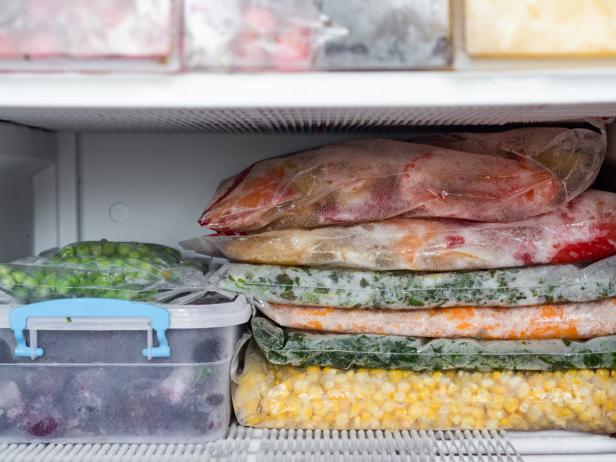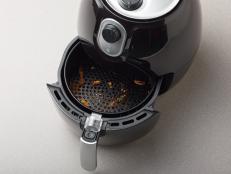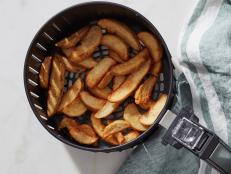How to Clean and Sanitize Your Freezer
Your freezer needs a deep clean about once a year.

lyulka/Getty Images
When was the last time you cleaned your freezer? (It's okay if your answer is never. There's no better time to start!) Food often gets shoved into the freezer and remains lost in there for a very long time — even years! Just like your refrigerator, your freezer needs a deep clean from time to time. Basically, you should go through your freezer, check what you have and get rid of the old food. Here’s a rundown on how to give your freezer a good cleaning.
How to Clean and Sanitize Your Freezer
Step 1: Defrost Your Freezer
First, defrost your freezer to ensure optimal performance of your appliance and to help minimize those utility bills. You will need to turn the freezer off and then unplug it before cleaning. Place towels or old newspapers underneath to catch any water that may drip.
It will take several hours for the freezer to defrost. Take out all shelving, drawers, and any other removable parts. Let them come to room temperature, then wash removable parts like shelves and drawers by hand with hot, soapy water and dry with a clean towel. Do not run cold glass shelves or drawers under hot water as the glass can crack.
Step 2: Move All Food from Your Freezer to a Cooler
Next, remove the items from the freezer. If you have a lot of food in your freezer, then think about what to keep and what to toss. Food inside the freezer you can’t identify should be thrown away. For items you want to keep, use a marker and label them with the names and dates. If a food looks off or smells strange — or you’re just unsure, then toss it too. Large ice crystals inside a container or a layer of frost on the food are also indications of poor quality and possible contamination, so those should be tossed.
Here is a guideline of how long foods can be stored in the freezer:
- Ground beef and pork: 3-4 months
- Beef steaks and roasts: 6-12 months
- Pork Chops: 4-6 months
- Pork roasts: 4-6 months
- Lunch meats and sausage: 1-2 months
- Lean fish (cod, haddock, flounder): up to 6 months
- Fatty fish (tuna, salmon): 2-3 months
- Cooked meat leftovers: 2-3 months
Place the foods you will be keeping inside a cooler or plastic storage bag together, which will help them stay cold.
Step 3: Wipe Down and Sanitize the Freezer
Once all the ice and frost has melted, clean the inside of the unit with hot, soapy water. Wipe the inside of the empty freezer with hot, soapy water, and wipe with clean water to rinse off the soap. Don’t forget to wipe inside the freezer doors and any drawers that can’t be removed. Dry everything with a clean towel. To sanitize, use a solution of 1 tablespoon of liquid bleach to 1 gallon of water. It should be done only after cleaning with hot, soapy water.
Your freezer also has a drain or drainage tube, which should be unplugged and all the water removed from it. Refer to the user’s manual if you are unsure where it is.
Step 4: Turn Freezer Back On and Refill It
Last, wait until the freezer temperature is close to 0 degrees fahrenheit , then refill and reorganize your freezer so you can find everything stored inside. Once you have finished the process, wash your hands with soap and water, wash any towels used to dry the freezer before using them again, and use hot, soapy water to wipe kitchen counter, cooler, or bags you placed food, refrigerator parts, and any cleaning materials.
How Often to Clean Your Freezer
You can rummage through your freezer and reorganize it anytime, but once or twice a year it’s a good idea to unplug it so the unit can defrost. This will give you the opportunity to safely clean and sanitize it. If there is a time of year where you have a lesser amount of food in your freezer (like when you go on or return from vacation), that would be the perfect time to defrost it. After a power outage would also be a good time once the power comes back on.
Toby Amidor, MS, RD, CDN, is a registered dietitian and consultant who specializes in food safety and culinary nutrition. She is the author of The Greek Yogurt Kitchen: More Than 130 Delicious, Healthy Recipes for Every Meal of the Day.
*This article was written and/or reviewed by an independent registered dietitian nutritionist.
Related Links:


































